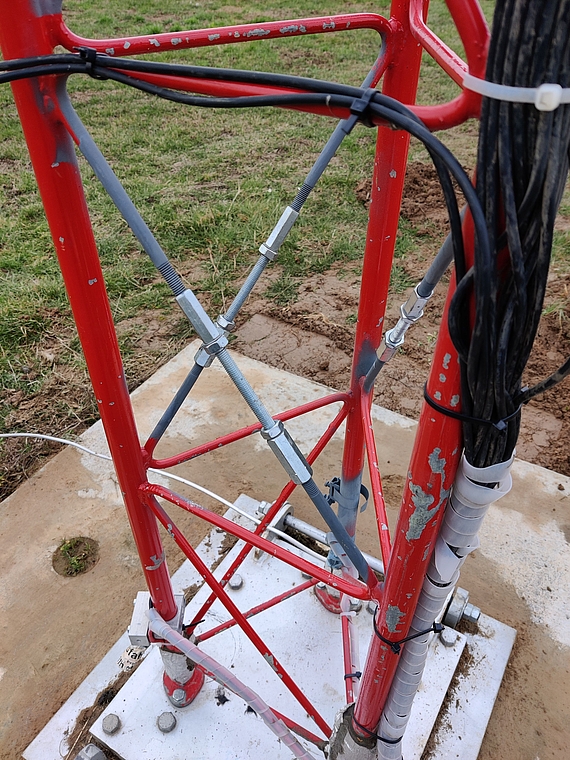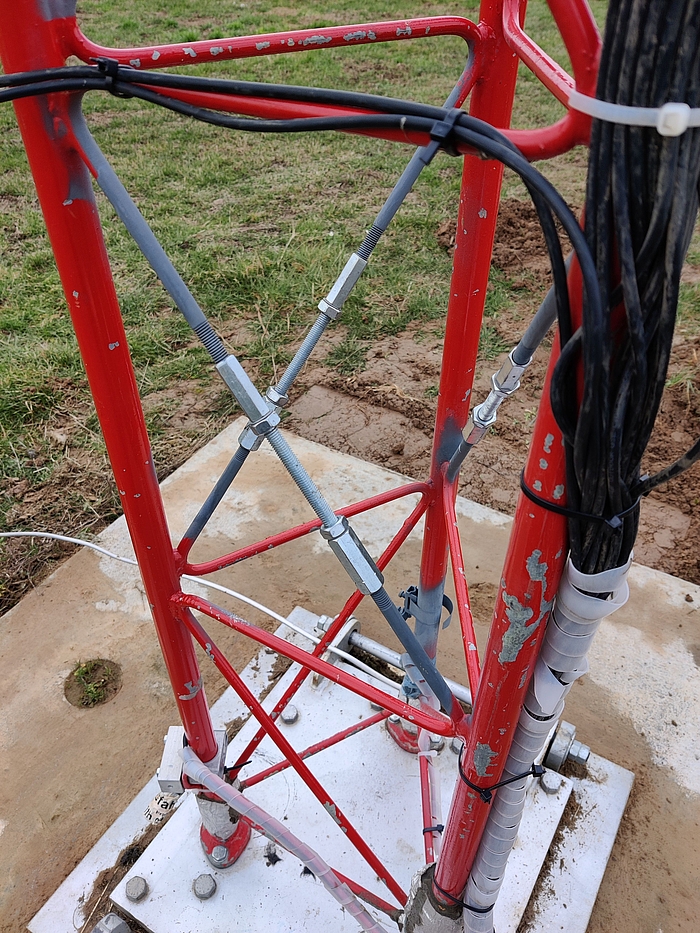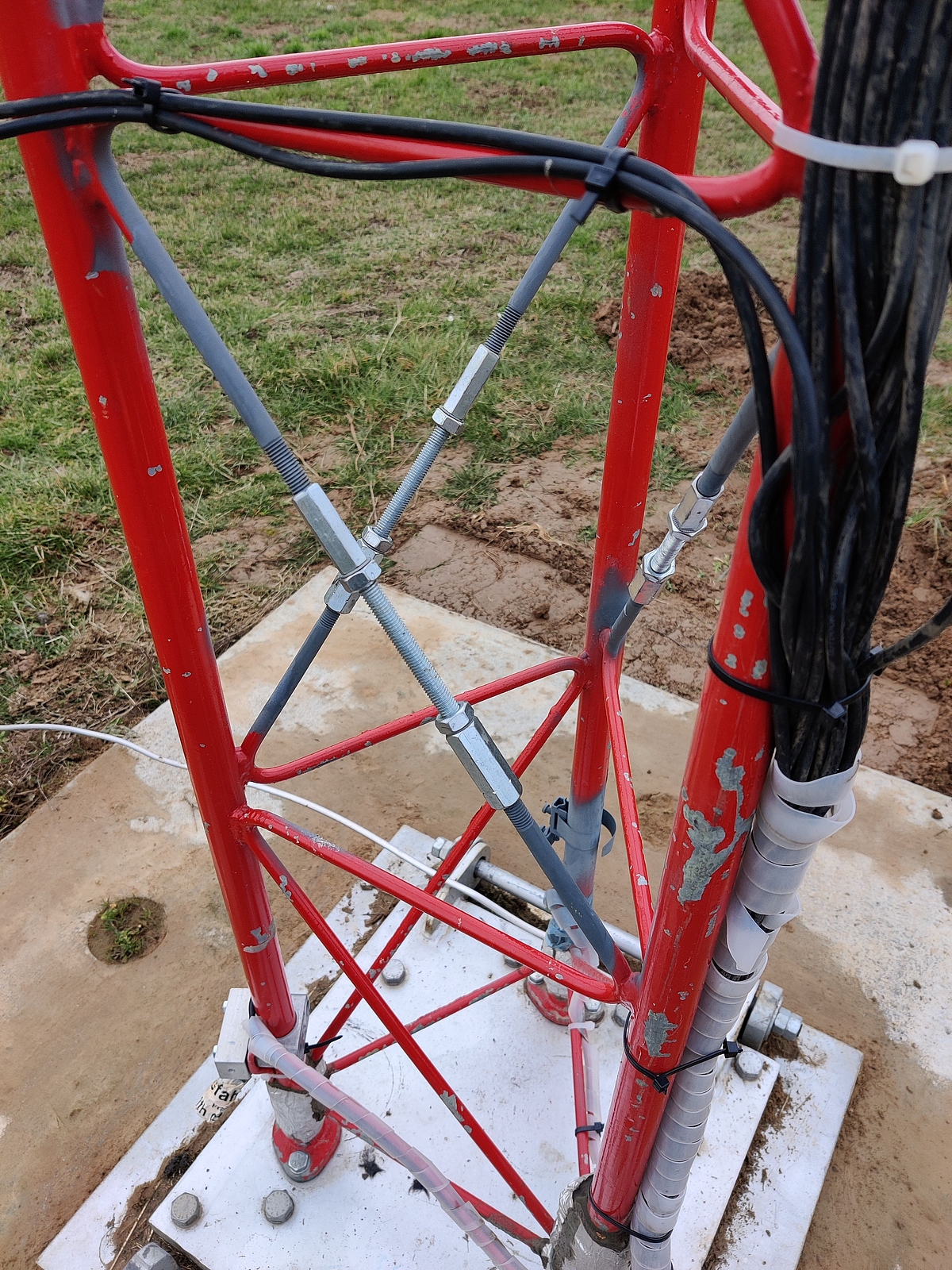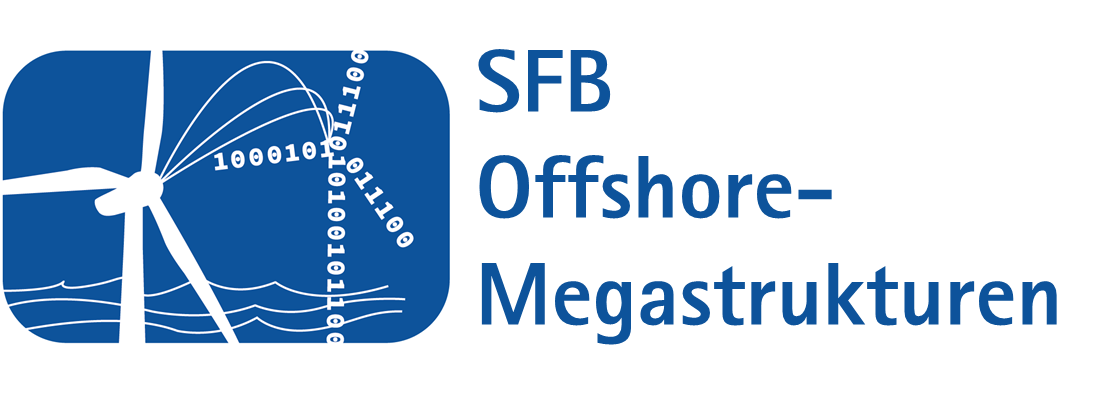Meaningful simulation models are required to predict a structure's dynamic behaviour reliably. However, it can be assumed that simulation results regarding the wind turbine (WT) dynamics, which were calculated during the design, and measurements of the dynamics of the WT, which are carried out during later operation, differ from each other. Reasons for this discrepancy can be, for example, inaccuracies in the model (e.g., neglect of manufacturing tolerances), changes in the real structure over time (e.g., corrosion) or changes in the environmental conditions (e.g., scour).
In order to minimise these deviations, the numerical structural model can be subsequently adapted to the measured data with the help of model updating procedures. The goal of model updating can thus be, first, to improve the quality of the initial simulation model. Second, an adaptation to long-term changes in the structure and the boundary conditions over the lifetime is possible. Third, model updating can be used for damage localisation and quantification. The last two points are especially needed to turn a classical simulation model into a digital twin.
During the first funding period, subproject (SP) C4 focused on including gathered monitoring data from a real structure in a corresponding simulation model. For this purpose, several new model-updating algorithms were developed. Each considers uncertainty, as data and models in real-world model updating problems are always uncertain.



The methods have been validated using two different test structures: first, a beam structure tested under laboratory conditions (Figure 1), and second, a lattice tower structure placed in the open field and exposed to real environmental conditions (Figure 2). Both structures have a reversible damage mechanism. Thus, the structure can be damaged and repaired as desired, and the model updating procedures can be tested and validated.
In the second funding period, two major topics will be investigated. First, to improve the computational performance of damage detection, localisation, and quantification further, the model updating methods of this SP will be directly coupled with the grey-box methods developed by SP C2 during the first funding period.
For WT operators, predictions into the future of the turbines’ dynamic behaviour are the basis for any reaction, e.g., a change of the control algorithms. The second objective of this subproject is to find out the effect of structural change and varying boundary conditions on the remaining lifetime. Only changes that influence the global behaviour of the turbine will be considered. This will be done continuously as an automated succession of model updates.


 ©
ISD/ LUH
©
ISD/ LUH
The scientific novelties of this subproject are that model updating procedures are investigated, which take into account measurement and model uncertainty. In addition, the procedures are optimised in terms of robustness and accuracy of the model updating. The research objective of the sub-project is thus to investigate robust model updating procedures for the digital twin of a future wind turbine based on global multi-objective optimisation.
Publications
-
2025: Damage location in mechanical structures by multi-objective pattern search
Günther, Ch., Hofmeister, B., Hübler, C., Jonscher, C., Ragnitz, J., Schubert, J., Steinbach, M.C. (2025): Damage location in mechanical structures by multi-objective pattern search
https://link.springer.com/article/10.1007/s11081-024-09940-1
-
2024: Investigations of different likelihood functions of the use in Bayesian model updating in structural applications
Dierksen, N., Hofmeister, B., Jonscher, C., Hübler, C. (2024): Investigations of different likelihood functions of the use in Bayesian model updating in structural applications; Proceedings of the 11th European Workshop on Structural Health Monitoring (EWSHM 2024)
-
2024: The Bayesian pattern search, a deterministic acceleration of Bayesian model updating in structural health monitoring
Dierksen, N., Hofmeister, B., Hübler, C. (2024): The Bayesian pattern search, a deterministic acceleration of Bayesian model updating in structural health monitoring, Elsevier
-
2024: Damage localisation using disparate damage states via domain adaption
Wickramarachchi, C.; Gardner, P.; Poole, J.; Hübler, C.; Jonscher, C.; Rolfes, R.: Damage localisation using disparate damage states via domain adaptation, Data-Centric Engineering 5, e3, 2024.
-
2024: Code
Dierksen, N., Wolniak, M., Hofmeister, B., Ragnitz, J., Hübler, C., Wernitz, S., Rolfes, R. (2024)
-
2024: Datenset: BayOMA identification results of a laboratory cantilever beam with a reversible damage mechanism
Wolniak, M., Hofmeister, B., Dierksen, N., Ragnitz, J., Jonscher, C., Rolfes, R. (2024): BayOMA identification results of a laboratory cantilever beam with a reversible damage mechanism
-
2023: Robust model updating in structural dynamics using a new non-implausibility-motivated optimisation approach
Hübler, C., Gardner, P., Wolniak, M. (2023): Robust model updating in structural dynamics using a new non-implausibility-motivated optimisation approach, Mechanical Systems and Signal Processing
https://doi.org/10.1016/j.ymssp.2023.110401 -
2023: Validation of an FE model updating procedure for damage assessment using a modular laboratory experiment with a reversible damage mechanism
Wolniak, M., Hofmeister, B., Jonscher, C., Fankhänel, M., Loose, A., Hübler, C., Rolfes, R. (2023): Validation of an FE model updating procedure for damage assessment using a modular laboratory experiment with a reversible damage mechanism, Journal of Civil Structural Health Monitoring
https://doi.org/10.1007/s13349-023-00701-9 -
2022: Validierung von daten- und modellbasierten Methoden zur Schadenslokalisierung
Hübler, C., Hofmeister, B., Wernitz, S., & Rolfes, R. (2022): Validierung von daten- und modellbasierten Methoden zur Schadenslokalisierung, Bautechnik, 6
https://onlinelibrary.wiley.com/doi/abs/10.1002/bate.202200015 -
2022: On noise covariance estimation for Kalman filter-based damage localization
Wernitz, S., Chatzi, E., Hofmeister, B., Wolniak, M., Shen, W., Rolfes, R. (2022): On noise covariance estimation for Kalman filter-based damage localization, Mechanical Systems and Signal Processing
https://doi.org/10.1016/j.ymssp.2022.108808 -
2022: Dataset: Measurement data of a laboratory steel cantilever beam with a reversible damage mechanism
Wolniak, M., Hofmeister, B., Jonscher, C., Fankhänel, M., Loose, A., Hübler, C., Rolfes, R. (2022): Dataset: Measurement data of a laboratory steel cantilever beam with a reversible damage mechanism
https://doi.org/10.25835/123gy6gm
Subproject Management
L5/06 639
Franziska-Braun-Str. 3
64287 Darmstadt
L5/06 639
Franziska-Braun-Str. 3
64287 Darmstadt
Staff
30167 Hannover






